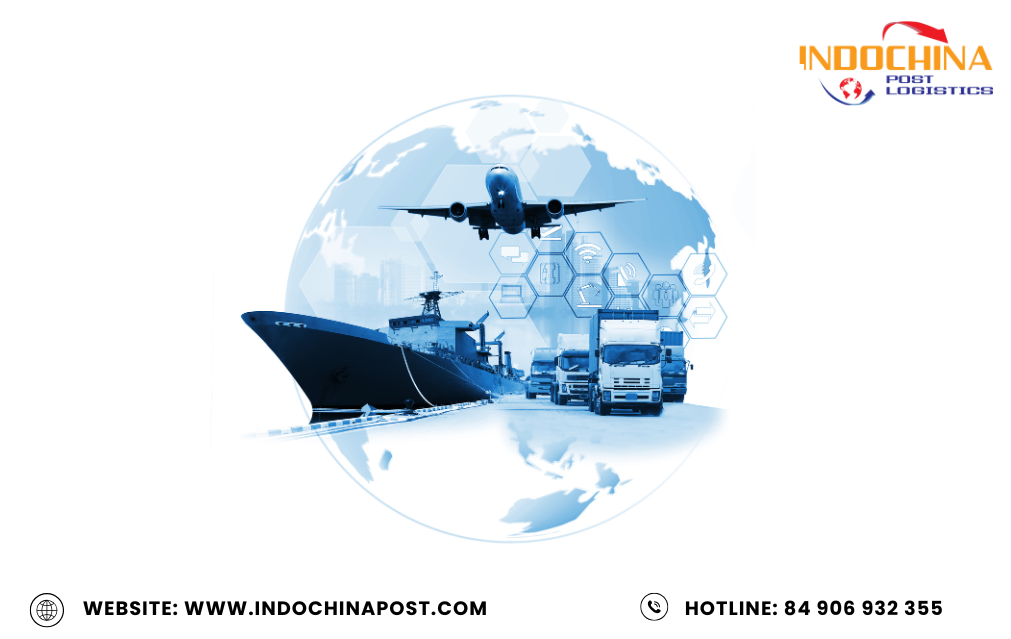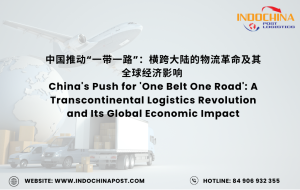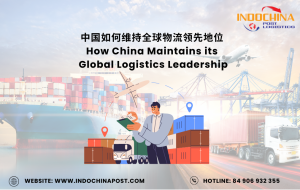Contents
中国如何维持全球物流领先地位 – How China Maintains its Global Logistics Leadership
China is expected to solidify its number one position in global logistics by 2025. Building on its rapid growth from 2000 to 2022, driven by economic expansion and its role as the “world’s factory.” China’s logistics market was valued at over $1.7 trillion in 2022, accounting for nearly 30% of the global logistics market. Projections for 2025 indicate significant growth, with China leading in both domestic and international logistics.
预计到2025年,中国将巩固其全球物流业的领先地位。2000年至2022年,中国经济扩张和“世界工厂”的角色推动了其快速增长。2022年,中国物流市场价值超过1.7万亿美元,占全球物流市场的近30%。2025年的预测指出,中国将在国内和国际物流中保持领先地位。
The Remarkable Development of China’s Logistics Industry – 中国物流行业的显著发展

China’s logistics industry has experienced remarkable growth over the past two decades, leveraging its position as a global manufacturing hub, adopting advanced technology, and developing world-class infrastructure. The boom in e-commerce, with the world’s largest e-commerce market and over 1 billion internet users, has driven demand for fast and reliable logistics services.
过去二十年来,中国物流行业经历了显著的增长,利用其全球制造中心的地位,采用先进技术和发展世界级基础设施。电子商务的繁荣,拥有全球最大的电子商务市场和超过10亿互联网用户,推动了对快速可靠物流服务的需求
Technological Innovation in Logistics – 物流技术创新
Technological innovation has been crucial to China’s logistics development. Integrating advanced technologies like AI, Big Data, Blockchain, and IoT has optimized supply chain management, improved operational efficiency, and enhanced service quality. The application of AI and automation has revolutionized warehouse management, optimized routing, and demand forecasting.
技术创新对于中国物流业的发展至关重要。整合先进技术如人工智能、大数据、区块链和物联网,优化了供应链管理,提高了运营效率和服务质量。人工智能和自动化的应用革命化了仓储管理、路线优化和需求预测。
The Importance of Infrastructure in Logistics – 基础设施在物流中的重要性
China has recognized the importance of developing world-class infrastructure to support the relentless growth of its logistics industry. Investing in infrastructure not only improves transportation efficiency but also enhances the country’s competitiveness in the global market.
中国认识到发展世界级基础设施对于支持其物流业持续增长的重要性。基础设施投资不仅提高了运输效率,也增强了中国在全球市场的竞争力。
Key Factors of China’s World-Class Infrastructure – 中国世界级基础设施的关键因素
Ports and Maritime Transport
7 of the World’s Busiest Ports: Shanghai, Shenzhen, Ningbo-Zhoushan, etc.
Modernization and Automation of Ports:
- Increased Efficiency: Reduced loading/unloading times
- Cost Reduction: Fuel and labor savings
- Enhanced Safety: Effective cargo monitoring and management
港口和海运
世界上最繁忙的7个港口:上海、深圳、宁波-舟山等
港口现代化和自动化:
- 提高效率:减少装卸时间
- 降低成本:燃油和劳动力节省
- 提高安全性:有效的货物监控和管理
High-Speed Rail Network
The World’s Largest High-Speed Rail Network:
- Rapid Connectivity: Between major cities and industrial hubs
- Reduced Transportation Time: Faster delivery
- Enhanced Efficiency: Ensuring safe and timely cargo transport
高铁网络
世界上最大的高铁网络:
- 快速连接:主要城市和工业中心
- 减少运输时间:更快的交货
- 提高效率:确保货物安全及时运输
Road Network
Over 5 Million Km Long:
- Seamless Connectivity: Urban and rural areas
- Improved Transportation System: Enhanced accessibility and distribution of goods
公路网络
超过500万公里:
- 无缝连接:城市和农村地区
- 改善交通系统:提高货物的可达性和分销
Air Cargo Hubs
Development to Meet Demand:
E-commerce
Time-Sensitive Cargo
Example:
Beijing Daxing International Airport
Providing fast and reliable delivery services
空运货运中心
满足需求的发展:
- 电子商务
- 时间敏感货物
例子:
- 北京大兴国际机场
- 提供快速可靠的交货服务
Benefits of World-Class Infrastructure
- Enhanced Competitiveness:
- China becomes a crucial logistics hub
- Improved Transportation Efficiency:
- Reduced time and costs
- Increased reliability and safety for cargo
- Supports Economic Growth:
- Contributes to the development of e-commerce and manufacturing industries
世界级基础设施的益处
- 增强竞争力:
- 中国成为关键的物流枢纽
- 提高运输效率:
- 减少时间和成本
- 提高货物的可靠性和安全性
- 支持经济增长:
- 有利于电子商务和制造业的发展
Green Logistics – China’s Sustainable Approach
China is embracing green logistics as a sustainable approach, reducing carbon emissions through the adoption of electric vehicles and renewable energy in warehouses. SF Express and JD Logistics have transitioned their fleets to electric vehicles, while JD.com’s “Asia No. 1” Smart Logistics Park in Shanghai is powered entirely by renewable energy, setting a standard for sustainable logistics.
绿色物流 – 中国的可持续方法
中国正在采用绿色物流作为可持续方法,通过采用电动汽车和仓库中的可再生能源来减少碳排放。顺丰速运和京东物流已经将车队转换为电动汽车,而京东“亚洲第一”智能物流园在上海完全由可再生能源驱动,设定了可持续物流的标准。
Challenges and Opportunities for China
Despite facing challenges such as rising labor costs, geopolitical tensions, and the need for deeper regulatory reforms, China’s logistics industry has opportunities to innovate and collaborate, addressing challenges and driving sustainable development. With strategic investments in new technologies and infrastructure, China is expected to maintain its global logistics leadership by 2025.
中国面临的挑战和机遇
尽管面临着劳动成本上涨、地缘政治紧张和需要更深入的监管改革等挑战,中国的物流业仍有机会创新和合作,应对挑战并推动可持续发展。通过对新技术和基础设施的战略投资,中国预计将保持其全球物流领先地位直到2025年。
Xem thêm:
Dịch Vụ Nhập Khẩu Robot Phục Vụ Nhà Hàng Từ Trung Quốc Cùng Tây Ninh Logistics
Nhập Khẩu Máy Lọc Không Khí Từ Trung Quốc Về Việt Nam 2025
Importing restaurant service robots from China to VietNam








